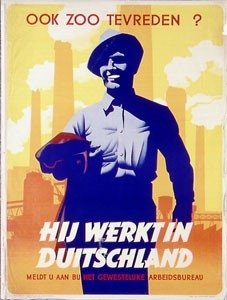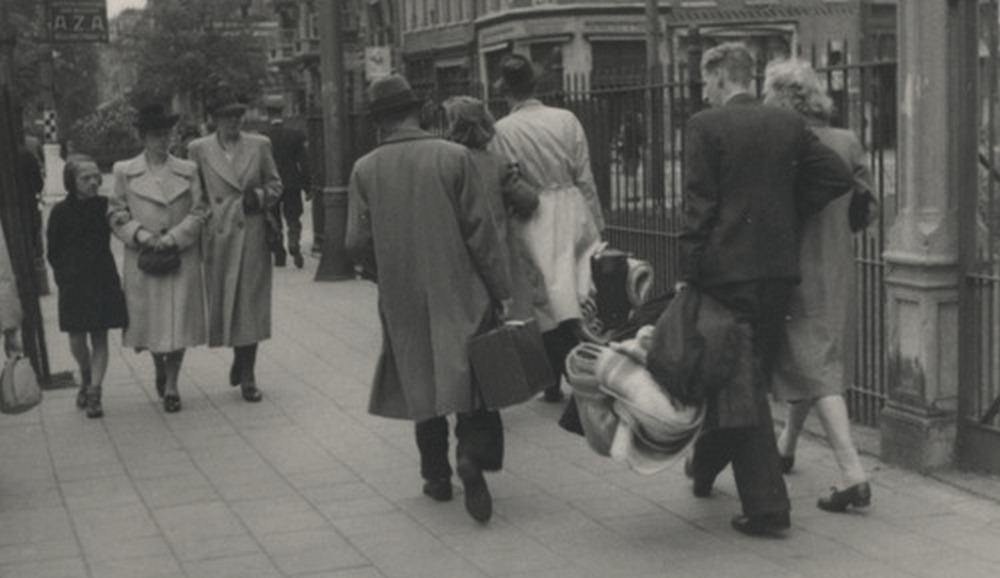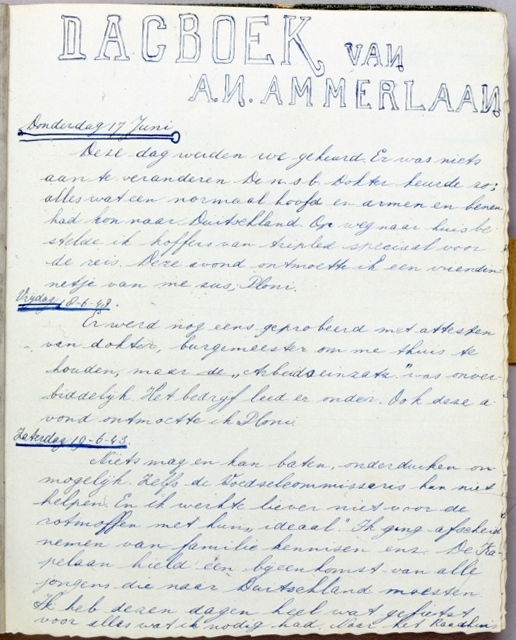
Report?
Work in Germany
Dutch people had been recruited for work in Germany on a voluntary basis as early as the thirties. During the occupation the recruitment continued with the help of colour posters. At first only the unemployed and specialised metal workers were forced to work in Germany, but in May 1943 all men between the ages of 18 and 35 had to report for the arbeidsinzet [forced labour input].

If you don't go, it's regarded as sabotage. You can go into hiding, but then what happens to your family?
Exemption
Many men did not report or managed to get an exemption. Medical examiners and civil servants helped them. The measure produced only 54,000 workers instead of the expected 170,000. So in 1944 a totale arbeidsinzet [total labor input] was announced: men between the ages of 16 and 40 would now be picked up during roundups and deported. A total of 500,000 Dutchmen ended up working in Germany under varying conditions. This was one-third of all the eligible men.

Where could you go without connections or ration coupons? Take a chance and make for the countryside? Join the resistance? Were there any offices where you could sign up? I hated the krauts, but I couldn't see any way out.
Warning
The men who had to go to Germany to work in 1943 could be eligible for an exemption. A pamphlet warned:
'The occupiers are squealing with satisfaction at the discovery of the exemption idea. This knife cuts both ways: registration and the quiet, gradual advancement of their devilish plan. You may be given a slip of paper! You may get an exemption — but then you are registered. They'll snatch you up when it's to their advantage. NOW COMES THE CRUNCH. Don't apply for an exemption! Don't pass the responsibility on to your employer. You've got to deal with this yourself.'
I was supposed to go into hiding at my uncle's, but when it came down to it I would have to pay 25 guilders a week. I didn't have anything, so off I went to Germany.
Illustrated diary

On June 17th 1943, Aad Ammerlaan began an illustrated diary. It was the day he was declared fit for forced labour in Germany. There was no way out of it. The NSB doctor's way of inspecting is: 'everything with a normal head and arms and legs can go to Germany.'
During the next few days, Aad tried in vain to obtain an exemption. He and a number of classmates left for Tuttlingen, close to the Swiss border.
It's strange to work in a factory when we're so used to freedom, everything is intended for the lousy krauts.

